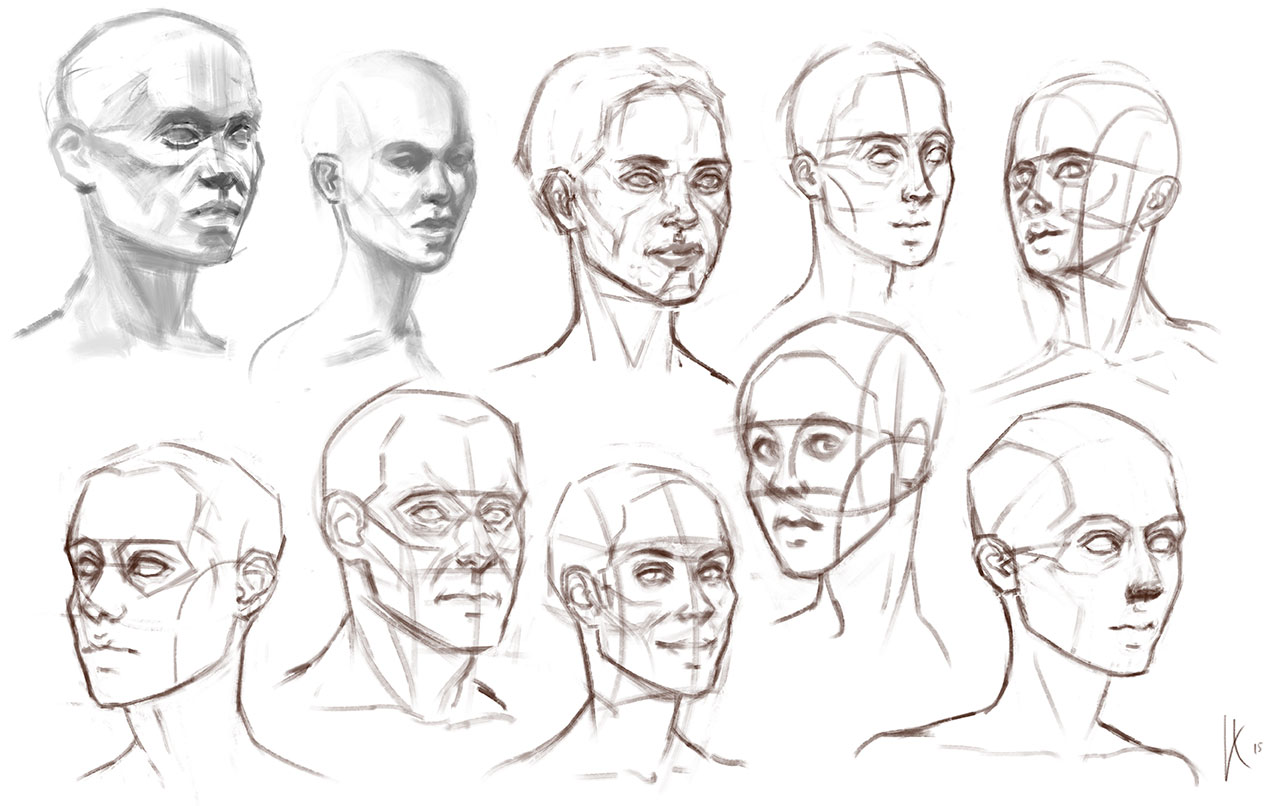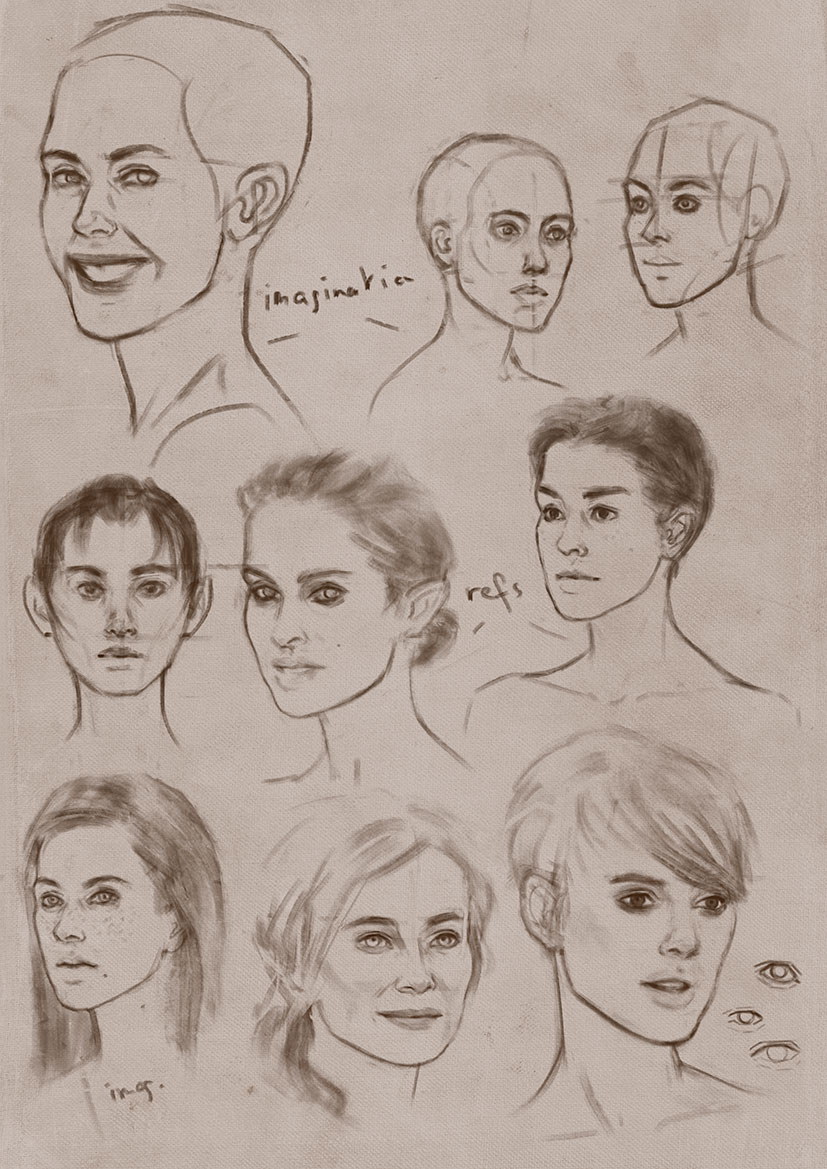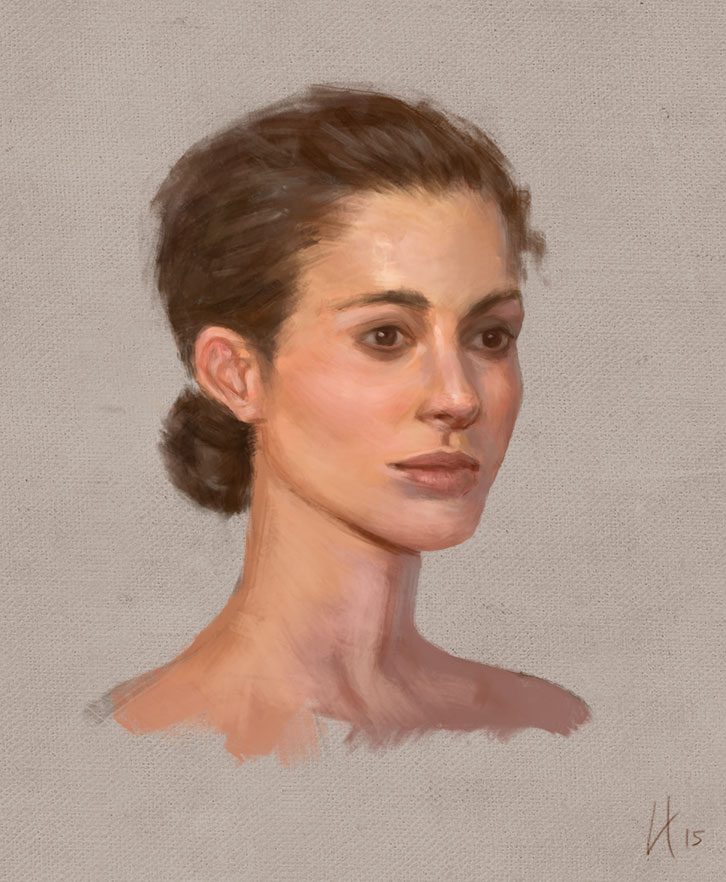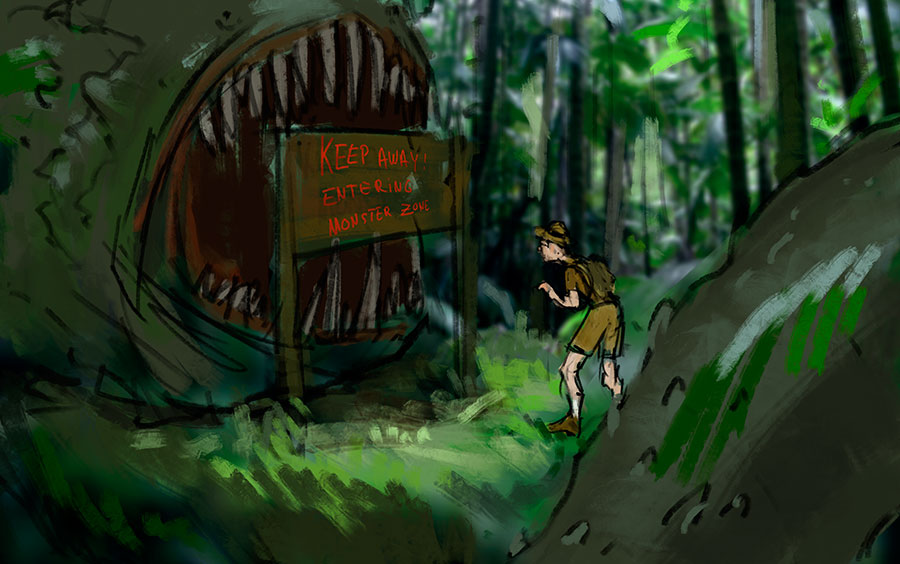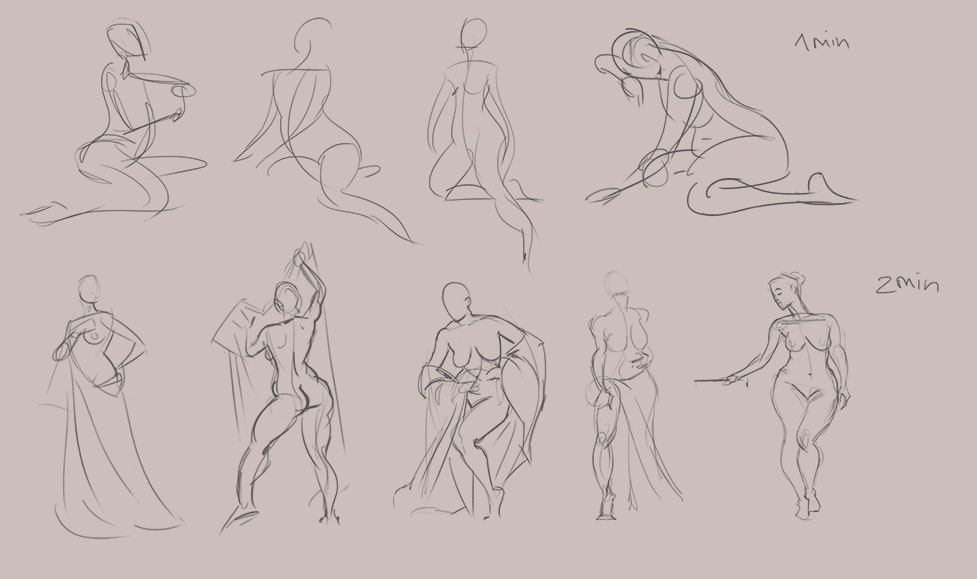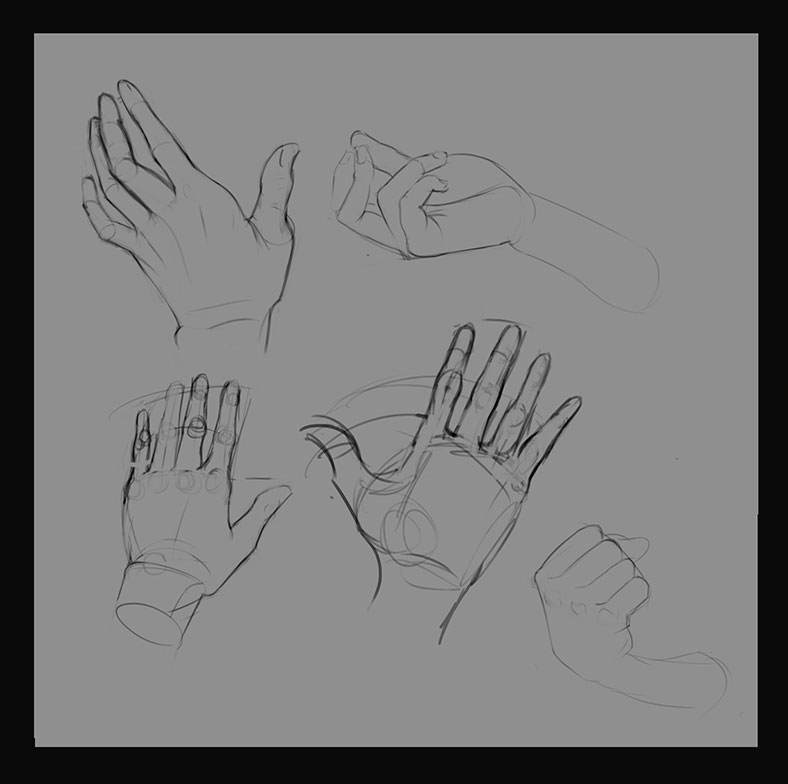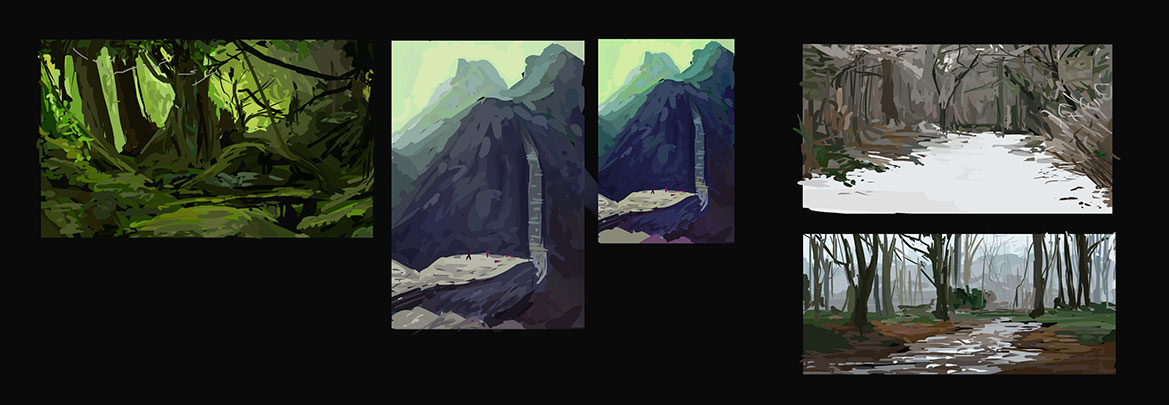04-22-2015, 06:12 AM
Aww thank you foxfire! ^^ No problem, I'd love to answer :)
So I start with a rough sketch. I lower the opacity, make a new layer where I clean up the line (I'm pretty bad painting without some linework/"guidelines" to follow).
Then, underneath the linework I block in my base colors (dark brown for the hair and pretty dark, saturated "orangey" skin color for the rest). Last, on a layer on top of all the others, I start building the light in.
When it comes to colors, as I said, I like starting with a plain darker color and build upon it with light (many people do the opposite though).
Keeping in mind the parts of the face that have more blood (ears, cheeks, nose etc..) to add a slight hint or red and a slight greyish or blueish light (sky) that often hits the side away from the main light source (often the sun). I didn't make it very obvious there (maybe I should've), but you can slightly see that on her further cheek (here it naturally helps defining the far cheek).
Sorry if I've been too long, hope it helps! :)
So I start with a rough sketch. I lower the opacity, make a new layer where I clean up the line (I'm pretty bad painting without some linework/"guidelines" to follow).
Then, underneath the linework I block in my base colors (dark brown for the hair and pretty dark, saturated "orangey" skin color for the rest). Last, on a layer on top of all the others, I start building the light in.
When it comes to colors, as I said, I like starting with a plain darker color and build upon it with light (many people do the opposite though).
Keeping in mind the parts of the face that have more blood (ears, cheeks, nose etc..) to add a slight hint or red and a slight greyish or blueish light (sky) that often hits the side away from the main light source (often the sun). I didn't make it very obvious there (maybe I should've), but you can slightly see that on her further cheek (here it naturally helps defining the far cheek).
Sorry if I've been too long, hope it helps! :)









